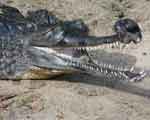Baylor Innovations, the quarterly magazine of Baylor Health Care System, featured the groundbreaking panic attack research of SMU psychologists Dr. Alicia E. Meuret, Dr. David Rosenfield and Dr. Thomas Ritz.
The Spring 2012 article by health and science writer Mark Cantrell, titled “Don’t Panic: New Research Shows That Panic Attacks Are Not As Spontaneous As Once Thought” details the startling findings of Meuret’s newest published study showing significant physiological instability in advance of so-called out-of-the-blue panic attacks.
EXCERPT:
By Mark Cantrell
Baylor Innovations
YOUR HANDS ARE SHAKING. YOUR KNEES FEEL WEAK. You’re sweating, your heart is pounding like a jackhammer and you feel you can’t catch your breath. You’re having a panic attack, and it seems to have struck without warning.But did it? A new study conducted at Southern Methodist University in Dallas suggests that panic attacks are actually telegraphed ahead of time by certain physiological changes.
The latest edition of the Diagnostic and Statistical Manual of Mental Disorders (DSM-IV) defines a panic attack as a discrete period of intense fear and discomfort in which symptoms such as a racing heart, shortness of breath or dizziness develop suddenly and reach a peak in about 10 minutes.
Those experiencing an attack may believe they’re having a heart attack or stroke. But one of the most distressing things about panic attacks is that they often seem to have no actual cause.
Out of Nowhere?
“Unexpected attacks – as compared to those triggered by certain situations such as flying, being in a closed space or speaking in public – are thought to occur spontaneously, in absence of internal signals or situational triggers,” explains Alicia Meuret, Ph.D., an associate professor at Southern Methodist University and chief investigator of the study.“The literature on how the body reacts when patients who are prone to them have an unexpected attack is very limited, due to the unexpectedness of the phenomenon. To date we do not know what triggers these attacks, but it is likely that the causes are multifactorial.”
For the study, Dr. Meuret enlisted 43 people with a history of panic attacks to wear portable monitors that captured changes in respiration, heart rate and other bodily functions.
The device was worn in a waist pack, with sensors attached at various points. Elastic bands around the chest and abdomen measured breathing rate, depth and variability.
Electrodes kept track of patients’ cardiac and sweat gland activity, while accelerometers measured body movement. Participants were instructed to press a “panic button” at the moment they felt the onset of an attack, and to write down the symptoms they were feeling at the time.
Follow SMU Research on Twitter, @smuresearch.
For more SMU research see www.smuresearch.com.
SMU is a nationally ranked private university in Dallas founded 100 years ago. Today, SMU enrolls nearly 11,000 students who benefit from the academic opportunities and international reach of seven degree-granting schools. For more information, www.smu.edu.
SMU has an uplink facility located on campus for live TV, radio, or online interviews. To speak with an SMU expert or book an SMU guest in the studio, call SMU News & Communications at 214-768-7650.

 SMU contributes fossils, expertise to new Perot Museum in ongoing scientific collaboration
SMU contributes fossils, expertise to new Perot Museum in ongoing scientific collaboration 100 million-year-old coelacanth discovered in Texas is new fish species from Cretaceous
100 million-year-old coelacanth discovered in Texas is new fish species from Cretaceous Observed! SMU’s LHC physicists confirm new particle; Higgs ‘God particle’ opens new frontier of exploration
Observed! SMU’s LHC physicists confirm new particle; Higgs ‘God particle’ opens new frontier of exploration DOE Award: advancing SMU’s link to the God particle
DOE Award: advancing SMU’s link to the God particle Academic achievement improved among students active in structured after-school programs
Academic achievement improved among students active in structured after-school programs New study on kingship and sainthood in Islam offers a striking new historical perspective
New study on kingship and sainthood in Islam offers a striking new historical perspective Texas frontier scientists who uncovered state’s fossil history had role in epic Bone Wars
Texas frontier scientists who uncovered state’s fossil history had role in epic Bone Wars







